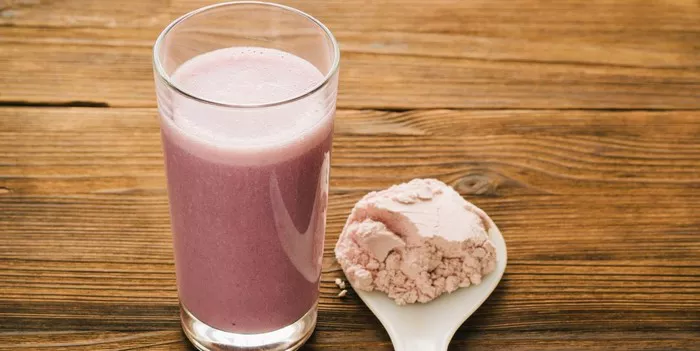Muscle soreness is something almost every active person has experienced. Whether you’re a beginner hitting the gym for the first time or a seasoned athlete pushing through a tough training cycle, soreness can strike with surprising intensity. The medical term for this discomfort is delayed onset muscle soreness, or DOMS. It usually appears 12 to 24 hours after a workout and can last for several days.
DOMS is caused by microscopic damage to muscle fibers, especially after unfamiliar or intense physical activity. Eccentric movements—where the muscle lengthens under tension—are particularly notorious for triggering soreness. This might happen during downhill running, heavy weightlifting, or even a challenging yoga flow. The soreness itself is part of the muscle adaptation process. Your body responds to this damage by repairing and strengthening the tissue, preparing it to handle future loads more efficiently.
While DOMS is a natural response, that doesn’t mean it has to be debilitating. The good news is that certain fitness programs can help relieve soreness, support recovery, and improve how your body adapts to training over time.
Can Active Recovery Workouts Ease Muscle Soreness?
Active recovery is one of the most effective ways to manage muscle soreness. Unlike full rest days, active recovery involves low-intensity movement designed to stimulate circulation and reduce stiffness without adding new strain. This kind of gentle activity promotes blood flow, which helps clear metabolic waste and delivers nutrients that speed up healing.
A good active recovery session might include light cardio, stretching, mobility drills, or easy bodyweight exercises. Think of a 30-minute walk, a casual bike ride, or a relaxed swim. These movements elevate your heart rate just enough to stimulate recovery without pushing your muscles too hard.
Many people find that soreness actually feels worse after long periods of sitting or inactivity. Staying lightly active helps loosen up tight areas and keeps joints mobile. Regular active recovery can also prevent future soreness by improving flexibility, joint stability, and muscular balance—all of which make your body more resilient.
How Can Yoga Reduce Post-Workout Muscle Pain?
Yoga is often underestimated as a recovery tool, but its benefits are profound when it comes to relieving muscle soreness. Through a combination of controlled breathing, gentle stretching, and body awareness, yoga helps relax tight muscles, reduce inflammation, and improve circulation. It also calms the nervous system, which plays a key role in recovery.
Specific yoga poses can target sore areas like the hamstrings, quads, shoulders, and back. Downward dog stretches the calves and hamstrings. Pigeon pose helps release tension in the hips. Child’s pose soothes the lower back. These movements help realign posture and release tight fascia, which often contributes to soreness.
In addition to the physical benefits, yoga encourages mindfulness. By focusing on breath and body sensation, you’re better able to notice subtle imbalances or areas that need attention. This awareness leads to smarter training decisions and more efficient recovery over time. A short daily yoga routine can keep your muscles supple and reduce your risk of injury, making it an excellent complement to any fitness program.
Are Stretching and Mobility Workouts Effective?
Stretching has long been associated with relief from muscle soreness, but not all stretching is created equal. Static stretching, where you hold a position for a period of time, is most effective after a workout or during recovery days. It helps lengthen tight muscles, improve range of motion, and reduce the feeling of stiffness that comes with DOMS.
Dynamic stretching, which involves controlled movements through full ranges of motion, is better suited for warmups. However, it can also be used during recovery workouts to reintroduce movement without high intensity. Leg swings, arm circles, and bodyweight lunges all count as dynamic mobility work.
Dedicated mobility programs like Functional Range Conditioning (FRC) or joint-specific routines offer structured approaches to improving movement quality and flexibility. These exercises focus not just on muscle length but also on joint control and tissue health. Over time, better mobility means less tension, fewer imbalances, and reduced soreness after challenging workouts.
Does Foam Rolling Really Help with Soreness?
Foam rolling, also known as self-myofascial release, has gained popularity in recent years as a recovery strategy. When done correctly, it can be incredibly effective in reducing muscle soreness and restoring normal muscle function. Foam rolling works by applying pressure to tight areas in the muscle or fascia, which helps release tension, increase blood flow, and improve lymphatic drainage.
Rolling out sore muscles like the quads, IT band, calves, and lats can relieve that deep, achy sensation many athletes feel after heavy training. Using a foam roller after your workout or on recovery days helps flush out waste products and encourages new blood to circulate through the tissue. This speeds up healing and helps muscles return to their normal state more quickly.
Consistency is key. Rolling for just 10 to 15 minutes a day can yield noticeable results. And you don’t need expensive equipment—foam rollers, lacrosse balls, or even massage guns can all be part of your self-care toolkit. Foam rolling isn’t a cure-all, but when paired with other recovery methods, it makes a powerful difference.
How Can Swimming Soothe Sore Muscles?
Swimming is one of the most underrated forms of recovery exercise. The buoyancy of water takes pressure off your joints and muscles, allowing for full-body movement with minimal impact. The gentle resistance of the water helps engage muscles in a balanced way, promoting circulation without adding strain.
Even a light swim or aqua jog can loosen tight areas, increase blood flow, and reduce inflammation. The cool temperature of pool water often feels soothing on sore muscles and can act as a form of hydrotherapy. Swimming also allows you to maintain cardiovascular fitness during recovery days without risking overuse injuries.
In addition to its physical benefits, swimming offers mental relaxation. The rhythmic movement and steady breathing pattern can be meditative, helping reduce stress hormones that interfere with muscle repair. Whether you’re a serious athlete or just starting your fitness journey, swimming can be a refreshing and effective way to manage soreness.
Is Walking Really That Helpful?
While walking may seem too simple to make a difference, it’s actually one of the best ways to recover from muscle soreness. It’s low-impact, easy to do, and doesn’t require any special equipment. Even a 20- to 30-minute walk can help improve circulation, reduce muscle stiffness, and boost your mood.
Walking engages multiple muscle groups without overloading any single one. It’s particularly effective for relieving soreness in the legs, hips, and lower back. The rhythmic motion encourages the lymphatic system to flush out waste products that build up during intense exercise.
Besides physical benefits, walking outdoors adds a mental health boost. Natural light, fresh air, and a break from screens can improve your mood and reduce stress, both of which are essential for full-body recovery. So the next time you’re sore and debating whether to stay on the couch, consider taking a short walk instead.
How Do Low-Impact Cardio Sessions Help?
Low-impact cardio—such as cycling, rowing, or elliptical workouts—provides a way to keep your body moving while minimizing stress on sore muscles and joints. These activities raise your heart rate enough to increase blood flow and aid in recovery, but they’re gentle enough not to cause further muscle damage.
A 20- to 40-minute session at a moderate pace can help loosen tight muscles, promote oxygen delivery to tissues, and flush out the metabolic byproducts that contribute to soreness. These workouts also stimulate your central nervous system in a way that helps you feel energized rather than drained.
For people who train frequently, incorporating light cardio on recovery days can keep your conditioning levels high while giving your muscles the rest they need. Just be sure to listen to your body—if your soreness feels sharp or extreme, it’s better to back off and focus on more restorative practices.
Can Pilates Help Ease Muscle Tension?
Pilates is another great option for reducing soreness and improving overall muscular balance. The focus on controlled movements, core engagement, and proper alignment makes Pilates both restorative and strengthening. It improves posture and flexibility while building support in smaller, stabilizing muscles that often get overlooked during traditional workouts.
Because Pilates emphasizes slow, mindful movement, it encourages better body awareness and muscle activation. This leads to improved mechanics in other activities and reduced risk of injury. Over time, this can also mean less soreness after high-intensity training because your body learns to move more efficiently.
Mat-based Pilates can be done at home with little or no equipment, making it accessible for most people. Even a short 15- to 30-minute session a few times per week can help reduce stiffness and improve your body’s ability to recover between harder workouts.
Should Recovery Days Include Structured Programs?
Yes, and planning your recovery days with intention can significantly improve your training results. Rather than thinking of rest as “doing nothing,” it helps to see it as an active part of your fitness journey. Structured recovery programs that include mobility work, gentle movement, and breath training are more effective than passive rest alone.
You can design a weekly schedule that includes one or two dedicated recovery days with activities like yoga, walking, swimming, or Pilates. These not only relieve soreness but also keep your body and mind in rhythm. When recovery becomes a consistent habit, you’ll notice fewer aches and faster improvements in strength and endurance.
Some fitness apps and programs now include guided recovery workouts alongside strength and cardio sessions. These are great tools to make sure you’re balancing effort with healing. Recovery isn’t optional—it’s essential. Making time for it is a sign of a smart, sustainable fitness practice.
Final Thoughts
Muscle soreness is a natural part of getting stronger, but it doesn’t have to hold you back. The right fitness programs can speed up recovery, reduce discomfort, and help you enjoy your workouts more. Active recovery sessions, yoga, foam rolling, walking, swimming, low-impact cardio, mobility work, and Pilates each offer unique benefits.
You don’t need to try them all at once. Start with the methods that feel most approachable and build from there. The key is consistency. Recovery should be woven into your weekly fitness plan—not treated as an afterthought. By respecting your body’s need for rest and support, you’ll not only relieve soreness but also become stronger, healthier, and more resilient in the long run.
Related Topics































